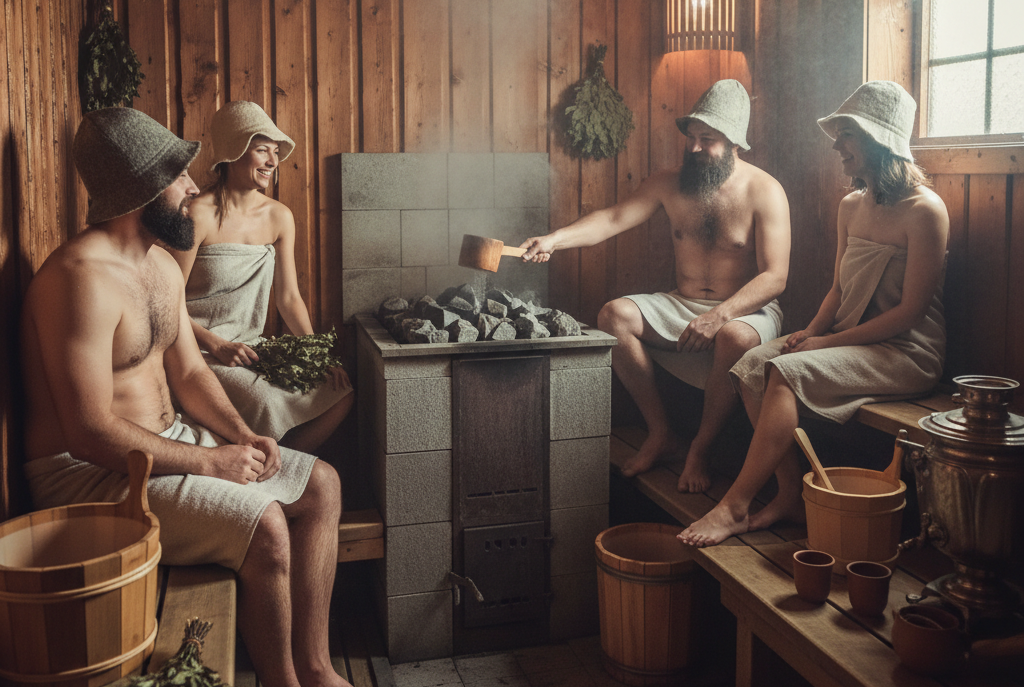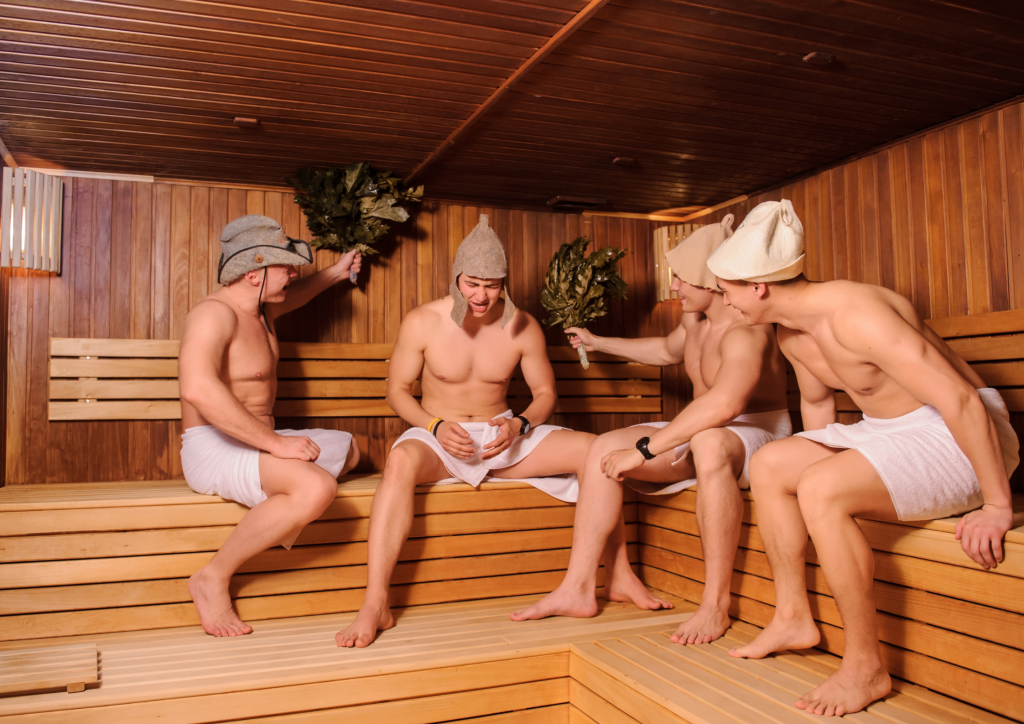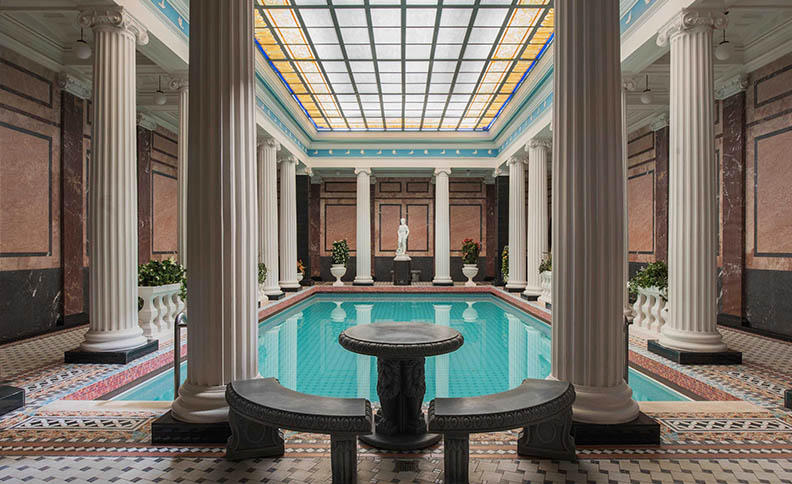More Than A Sauna: Understanding the Russian Banya Tradition

When winter settles over Russia and snow muffles every sound, there’s one place where warmth feels alive — the Russian banya. More than a bathhouse, it’s a ritual of rebirth where body and soul find renewal through fire, water, and steam. As I write this, I can almost smell the birch branches again. The memory brings me back to my grandparents’ home — to my late grandfather’s banya, where I first learned that true warmth isn’t just heat. It’s something deeper: a mix of care, laughter, and quiet connection that still lives inside me today.
More Than a Bathhouse

The Russian banya is more than just a place to wash. It’s a world of its own. The air is heavy with the scent of dried herbs, firewood crackles softly, and the wooden walls seem to breathe warmth. Inside, time slows down. The noise of everyday life disappears, leaving only the sound of water sizzling on hot stones.
Every Russian family has its own banya traditions. My grandparents’ countryside house was no exception. My grandfather would light the fire once a week, exactly “as his father had taught him.” For him, it was a sacred ritual.
I loved visiting them, even for a few days. Grandpa would tell endless stories from his youth, while Grandma prepared the table with tea and something delicious. But when it came to the banya, he was serious.
My Memory of Warmth
For me at first, it was a real challenge. The heat was so intense it seemed to sting my skin and burn the air in my lungs. Whenever I tried to step outside, Grandpa would stand by the door laughing: “You won’t leave until you defeat me!”
Then came the venik, a bundle of birch branches he swept across my back and shoulders with slow, rhythmic strokes. Not out of anger, but in the true Russian way: invigorating, purifying, full of life.
Then the door would burst open, and I’d dash outside. In summer, straight under the cold shower; in winter, diving headfirst into a snowdrift. In that instant, it felt like being born anew. My body turned weightless, my mind calm and clear, as if the whole world had found its balance again. Grandpa practiced this often and was rarely ill. For me, the greatest change was in my mind, my sleep deepened, my anxiety eased, and I found myself more focused and alive than ever. My sleep improved, my anxiety subsided, and I became much more productive in my studies.
After that we’d go back into the house, sit down at the table, and enjoy the quiet evening. Grandma would pour tea, set out small bowls of homemade jam and warm pies, and there, surrounded by the people I loved most, everything felt simple, peaceful, and complete.
The Warmest Kind of Togetherness
In Russia, offering someone the banya is one of the highest gestures of hospitality. Even in old fairy tales, travelers are invited to bathe before supper and rest, a sign of care and respect.
Sometimes guests came to our house just for the banya, not for dinner or celebration. It was always a joyful event: someone tending the fire, someone carrying veniks, laughter echoing down the hallway. The house felt alive.
Inside the steam room, everyone became equal. Formalities melted away, and people opened up — sharing stories, jokes, even secrets. That’s what makes the banya special: it’s not just about cleansing the body, but warming the heart. It’s a kind of Russian social equalizer. You walk in as acquaintances and leave almost as family.
The Union of Fire, Water, and Steam

The Russian banya is one of the oldest traditions in the country, with roots as far back as the 6th century. It’s built on the harmony of three elements — fire, water, and steam — which together symbolize transformation.
The heat burns away fatigue, the steam purifies the spirit, and the cold, whether snow or icy water, revives life itself. Alternating scorching heat with sudden cold — plunging into snow, an ice hole, or a splash of icy water — became the ultimate way to strengthen both spirit and body. The first few seconds are always the hardest: your breath catches, your muscles tighten, and every instinct screams to retreat to warmth.
But if you can endure those brief moments, something shifts inside. The cold that first burns soon releases you. Blood surges, your mind clears, and your skin tingles with a strange, pleasant vitality. You’re no longer freezing, you’re simply alive, standing still in that perfect, electric moment, as if someone has pressed life’s reset button.
Inside a Traditional Banya


A traditional banya is usually a log cabin with a small window near the ceiling. In one corner stands a stone stove filled with rocks that hold the heat. When water is poured over them, thick clouds of steam rise, filling the room with warmth and the scent of wood.
Wooden benches line the walls at different levels, letting everyone choose their preferred heat. Unlike the Finnish sauna or Turkish hammam, the Russian banya combines high humidity (up to 65%) with moderate heat (70–90°C).
Fragrant herbs — mint, yarrow, St. John’s wort — are often added for healing aroma. This mix of steam and scent treats the body gently, improving blood circulation and calming the mind.
Beaten with a Venik — Punishment or Massage?


To foreigners, the parenie ritual often looks strange. You’re already in a scorching hot room, and then someone starts hitting you with a bundle of branches. But in Russia, this isn’t punishment, it’s healing.
I’ve heard that many foreigners might see this as pure madness — is that true? Let me know in the comments.
And honestly, I get it. You’re already in a blazing hot steam room, and then someone starts whisking you with branches. In most cultures, being hit means punishment. But in the banya, being whisked with a venik means care.
The venik isn’t for pain, it pushes the warm air deeper, boosts blood circulation, releases natural oils from the leaves, and makes the air easier to breathe. It’s basically a herbal heat massage.
So no, we’re not fighting in there, we’re healing. And once you try it, you’ll understand.
How to Steam Like a Local
If you ever visit a Russian banya, here’s how to do it properly:
- Prepare the venik — soak it in cold water the day before, then warm it above the stones.
- Start slow — sit on the lower bench and let your body adjust.
- Take breaks — cool off outside or pour cold water over yourself.
- Do parenie — in pairs, one person steams, the other relaxes.
- Rest and drink tea — banya is about renewal, not endurance.
As my grandfather used to say: “After a good banya, you don’t feel like talking — you just feel like living.”
Where to Experience True Steam


If you ever visit Moscow, the Sanduny Baths are a must. Open since 1808, they combine luxury with deep-rooted tradition. Inside its ornate rooms and marble halls, the air still carries that same sacred warmth, proof that the Russian banya is not just alive, but thriving.
Whether in a grand bathhouse or a humble wooden cabin, the essence is the same: fire, water, and friendship.
A Memory That Stays Warm
Each winter, I remember my grandfather’s grin, the hiss of steam, and the glow of firewood. He’s gone now, but in every banya I feel him; in the warmth, the laughter, the calm that follows. True warmth never fades; it simply waits for you to return.

About the Author & Local Insight
Author: Vladislav Zherko — a local resident of Moscow, Russia and passionate travel writer. Having lived in the city his whole life, he knows its rhythm, contrasts, and hidden stories like no one else. Specializes in local culture and trips, architecture, and offbeat destinationsI write from Moscow, a city where history hums beneath every streetlight and the rhythm of modern life never quite drowns out the echoes of the past. My stories grow from this intersection: where centuries-old traditions meet restless creativity, and where every journey through Russia reveals something unexpected. Through my writing, I hope to show that Russia is not just vast in distance, but in spirit — a country of contrasts, resilience, and quiet beauty waiting to be discovered in the details.
Local Experience: This article is based on firsthand knowledge of Moscow, Russia. The author personally explores and verifies each recommendation to ensure it reflects authentic local life.
Originality Statement: The content is entirely written from the author’s own knowledge and observations. No material from external sources or AI tools was used.
Information Update: Last updated on . All details are regularly reviewed to ensure accuracy and relevance.
Reviewed by: Vladislav Zherko — local expert. Reviewed for factual accuracy and authenticity.
Disclaimer: Content reflects the author’s personal perspective and experience. Information may change — please verify details on official resources before traveling.
